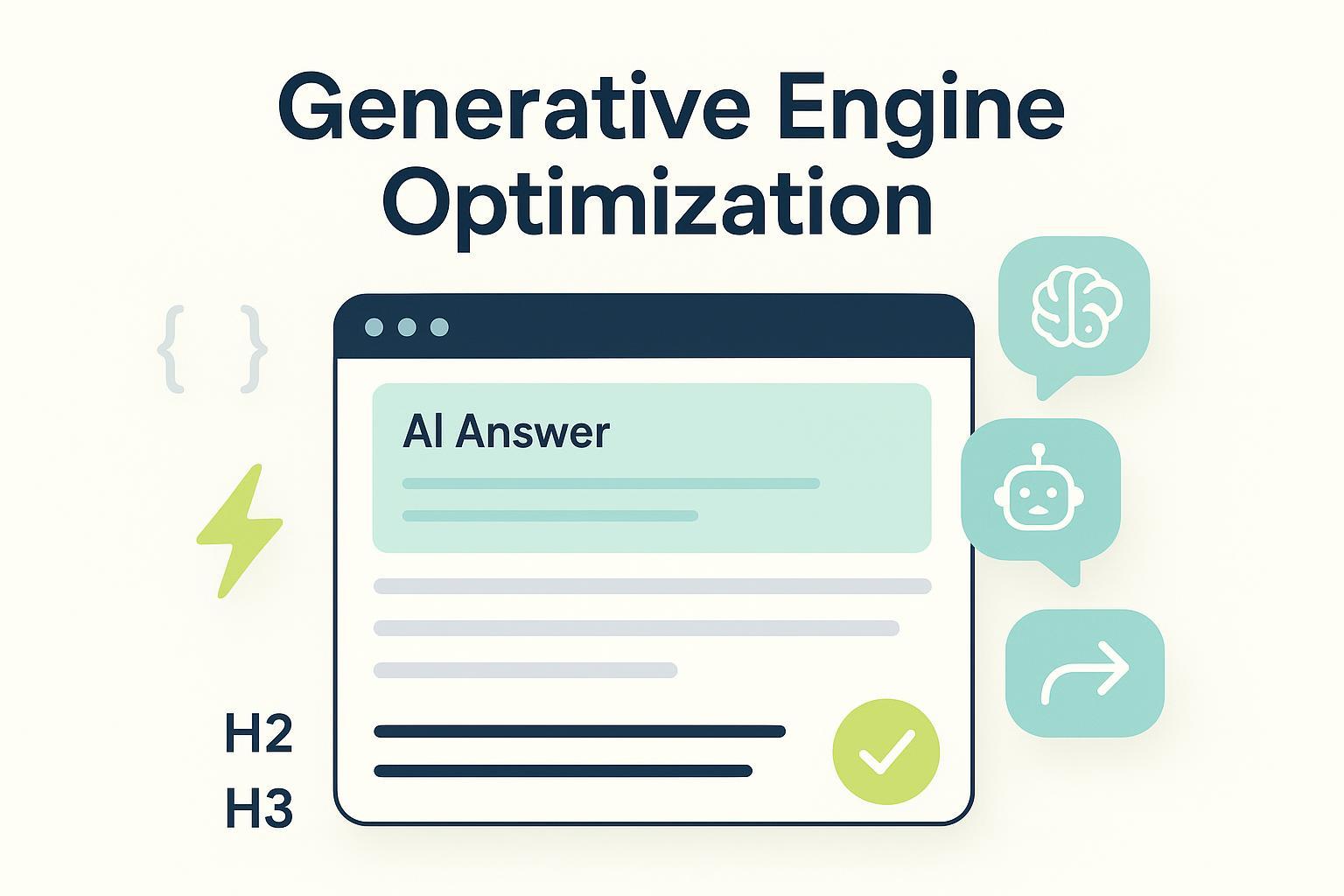How Entity Optimization Impacts AI Search Rankings in 2025
Discover expert best practices for entity optimization to boost AI search rankings in 2025. Includes schema strategies, workflow checklists, and measurement for SEO pros.


When AI Overviews appear, fewer users click classic blue links—yet the sites that get cited often pick up relative gains. In late-2025 datasets, practitioners observed steep CTR drops on queries with AI Overviews, while being cited correlates with stronger performance than being ignored, per the longitudinal analysis from Seer Interactive’s 2024–2025 cohort. See the methodology and deltas in the Seer dataset: the team reported materially lower organic CTR overall alongside a “citation advantage” for included sources, summarized in the September 2025 update: Seer Interactive’s AI Overviews CTR study (2025). At the same time, coverage levels vary by study and timeframe; for a current lens on scope and query mix, review seoClarity’s ongoing measurements in seoClarity’s AI Overviews impact research. The strategic takeaway: the game is shifting from “rank a URL for a keyword” to “be the most trusted entity for an answer and earn the citation.”
What entity optimization means now—and why it changes your odds of being cited
Entity optimization in 2025 is the discipline of defining “things” (Organization, Person, Product, CreativeWork, Place, and their relationships) in ways machines can disambiguate confidently. Think of it like labeling every character and prop in a screenplay—and then showing how they relate—so the director (the AI model) can assemble the most coherent scene.
Search and AI systems consume these signals differently but depend on the same foundation:
- Google AI Overviews uses Gemini-family models to assemble summaries and show source cards. Google’s own rollout explained how generative answers now appear broadly in U.S. results; read the product framing in Google’s AI Overviews announcement (2024).
- Knowledge-graph-driven features (e.g., Knowledge Panels, entity carousels) rely on consistent, corroborated entity definitions. Google’s guidance for creator and organization attribution underscores structured data’s role; see Google Developers: ProfilePage structured data.
In practice, stronger entity clarity increases your odds of being recognized as “the right source” for a given answer. It doesn’t act like a direct, numeric “ranking factor,” but it influences discovery, grounding, and citation selection across AI surfaces.
The workflow that wins in 2025
Here’s the end-to-end process I see working across enterprise, B2B, and mid-market teams. It’s deliberately cross-functional: SEO, content, PR, analytics, and engineering each own a piece.
- Discover and map entities
- Inventory core entities: your Organization (legal name, DBA, URL, logo), key People (authors, executives, subject-matter experts), Products/Services, flagship CreativeWorks (reports, studies), and Places (HQ, offices if local matters).
- Compile authoritative identifiers: Wikidata Q-IDs, Wikipedia pages (if notable), Crunchbase, official social profiles, and high-authority directories. These become your sameAs backbone.
- Resolve collisions: if your brand name overlaps with another entity, plan disambiguation via descriptions, identifiers, and contextual relationships.
- Engineer the schema (JSON-LD first)
- Standardize @id patterns for stable, site-internal identifiers.
- For Organization and Person, populate name, url, logo/image, contact, sameAs; for authorship and creator trust, align with ProfilePage structured data.
- On content pages (Article/WebPage), set about for the primary entity and mentions for secondary entities; match these to your internal links and surrounding copy.
- Build authority clusters and quotable content
- Create pillar pages around your core topics and reinforce them with focused subpages.
- Add “evidence blocks” (clear stats, short quotes with citations, definitions) to make your content easier for LLMs to ground and quote.
- Use precise, descriptive internal anchors that echo your entity relationships without feeling robotic.
- Corroborate off-site
- Align your company profiles, press pages, and directory listings. Consistency in legal name, URL, and key attributes reinforces confidence.
- Where notability allows, maintain or pursue Wikipedia/Wikidata entries with neutral tone and sources.
- Internationalize with intent
- If you operate across languages or regions, implement reciprocal hreflang on alternates and ensure canonicals are correct; see Google Developers: managing multi-regional and multilingual sites.
- Keep language-specific sameAs links (e.g., localized Wikipedia) and declare inLanguage on CreativeWork when appropriate.
- Validate and manage change
- Validate JSON-LD regularly with Google’s Rich Results Test and third-party validators.
- Maintain a change log of schema, content clusters, and off-site updates so you can correlate shifts in AI citations and traffic.
Minimal viable entity schema checklist (by page type)
| Page type | Required core | Helpful additions | Common mistakes to avoid |
|---|---|---|---|
| Organization | name, url, logo/image, sameAs[], @id | contactPoint, foundingDate, legalName | Inconsistent legal names across web; missing sameAs to authoritative profiles |
| Person (author/expert) | name, url, sameAs[], @id | affiliation, jobTitle, image | Multiple author variants; no ProfilePage linkage |
| Product/Service | name, description, sku/@id | brand, offers, review/aggregateRating | Treating services as vague pages without a Product/Service entity |
| Article/WebPage | headline, url, about, mentions, author, datePublished | inLanguage, citation list in body, publisher | about/mentions don’t match on-page copy; orphaned @id |
| Location page | name, address, geo, url, @id | openingHours, sameAs, areaServed | NAP inconsistency; hreflang not reciprocal |
Measuring impact without guesswork
You can’t manage what you don’t measure. Define success in terms that reflect AI-era behavior, not just classic rankings.
- AI Overview presence and citation rate: Track how often your queries trigger AI Overviews and how frequently your pages appear in the citation cards. Pair this with impression/click trends to see the real trade-offs. Seer’s 2025 update shows the directional dynamic: overall CTR falls on AIO queries, but cited sources fare better relative to non-cited peers—see the Seer Interactive study (2025).
- Query coverage growth: Monitor the share of your landscape exposed to AI Overviews. Coverage has expanded and varies by vertical; seoClarity maintains an accessible lens in their AIO impact research.
- Sentiment and attribution for AI answers: When models mention your brand, what’s the tone? Are they crediting the right entity (your org vs. a reseller)?
- Knowledge surfaces: Track Knowledge Panel presence, author cards, and entity carousels tied to your brand and experts.
- Traffic/CTR impacts: Compare deltas for queries with and without AI Overviews. Independent studies such as Ahrefs report notable click erosion on AIO queries—see the analysis in Ahrefs on AI Overviews reducing clicks (2025). Use ranges and date-stamped annotations; methods differ by source.
For teams new to tracking AI visibility mechanics and prompt behavior, I recommend this primer for context on tool approaches and volatility: see the internal overview of AI citation tracking workflows.
Platform-specific notes: how entity signals get “read”
- Google AI Overviews (AIO): Entities matter for disambiguation and for which sources earn citations. Evidence-heavy sections (definitions, stats, methods) tend to be more “quotable.” Clear author and publisher attribution supports trust. Expect query-dependent variability in whether AIO appears at all, as documented in industry trackers and Google’s evolving product communications.
- ChatGPT/GPT-based surfaces: When models are connected to browsing or curated sources, they still benefit from clean, canonical entity signals. Structured author and organization markup, explicit evidence blocks, and consolidated “About” pages increase grounding precision.
- Perplexity and Gemini: Both emphasize direct citations and often favor well-structured, authoritative sources. We often see better persistence of citations on evergreen, well-clustered content with consistent entity IDs and external corroboration.
A simple way to think about it: if your site reads like a tidy reference—with stable identifiers, verifiable claims, and clear authorship—LLMs find it easier to trust and quote you.
A pragmatic 30/60/90-day plan
-
Days 1–30: Establish the foundation
- Audit entities and IDs: Organization, key People, Products/Services, flagship content. Create/confirm @id patterns and a sameAs spreadsheet (Wikidata, Wikipedia if applicable, official profiles).
- Ship baseline schema: Organization and Person across site; ensure author ProfilePages; add about/mentions on top 20 content URLs.
- Stabilize off-site: Align name/URL/logo across profiles and priority directories; fix glaring inconsistencies.
-
Days 31–60: Build authority and quotability
- Launch 2–3 pillar clusters with supporting articles that include evidence blocks (definitions, stats with citations, methods).
- Add international signals where relevant: reciprocal hreflang on core alternates; declare inLanguage.
- Start measuring: Log AIO presence, citations, and sentiment for a prioritized query set; annotate content/schema releases.
-
Days 61–90: Iterate and benchmark
- Expand schema depth: Products/Services, Location pages, and higher-fidelity Article markup.
- Competitive benchmarking: Run prompt-level tests weekly to see who’s cited across engines and which content structures win.
- Refine based on results: Consolidate thin pages, strengthen internal anchor text, and enrich evidence sections where AI tends to paraphrase without citing.
Throughout, keep a change log tying releases to shifts in AI citations, Knowledge surfaces, and CTR. Patterns emerge faster than you expect.
Interpreting conflicting datasets without paralysis
You’ll encounter different numbers for AIO coverage and CTR effects. That’s expected: methods and time windows vary. Focus on direction over a single figure. As of late 2025, most independent analysts report: 1) AIO coverage has grown meaningfully across many verticals, 2) organic CTR tends to drop where AIO appears, 3) being cited confers a relative advantage versus not being cited. These findings align with the combined view from Seer’s longitudinal work and ongoing trackers like seoClarity, with Google’s own product posts providing the “what” and “why,” not the weighting.
Risks and edge cases to watch
- Ambiguous names: If your brand or product collides with a more notable homonym, invest extra effort in disambiguation—consistent sameAs, descriptive context, and authoritative off-site references.
- Over-markup: Schema should reflect reality on the page. Inflated or mismatched properties can erode trust and may be ignored.
- Vendor claims: Treat dramatic lifts with caution unless a study discloses brand, baselines, and methods. Use them as hypotheses, not proof.
What about rankings versus citations?
Classic rankings still matter for non-AIO queries and for users who scroll. But on AIO queries, “ranking” becomes partially about “citation selection.” That changes incentives: you’ll prioritize entity clarity, evidence presentation, and author/publisher trust signals alongside your usual technical and content quality work. Google has reiterated that structured data by itself isn’t a direct ranking factor; however, it improves understanding and presentation, which in turn influences how your brand appears across AI surfaces. For product and policy framing, see Google’s AI Overviews announcement (2024).
Next steps (and a note on tools)
Disclosure: Geneo is our product. If your team wants a structured way to monitor cross-engine AI citations, sentiment, and query coverage while you implement the workflow above, a neutral tracker helps you see cause and effect. For primer-level context on monitoring approaches, this overview of AI citation tracking workflows is a useful starting point; to understand volatility patterns during major shifts, see how to track AI Overview volatility; and for platform differences, compare platform citation patterns.
Here’s the deal: entity optimization won’t magically overcome weak content or thin expertise. But when you already have substance, tightening your entity modeling, schema, and corroboration is one of the highest-ROI moves you can make in the AI search era. Ready to see where your entities stand—and which answers you deserve to be cited for next?




